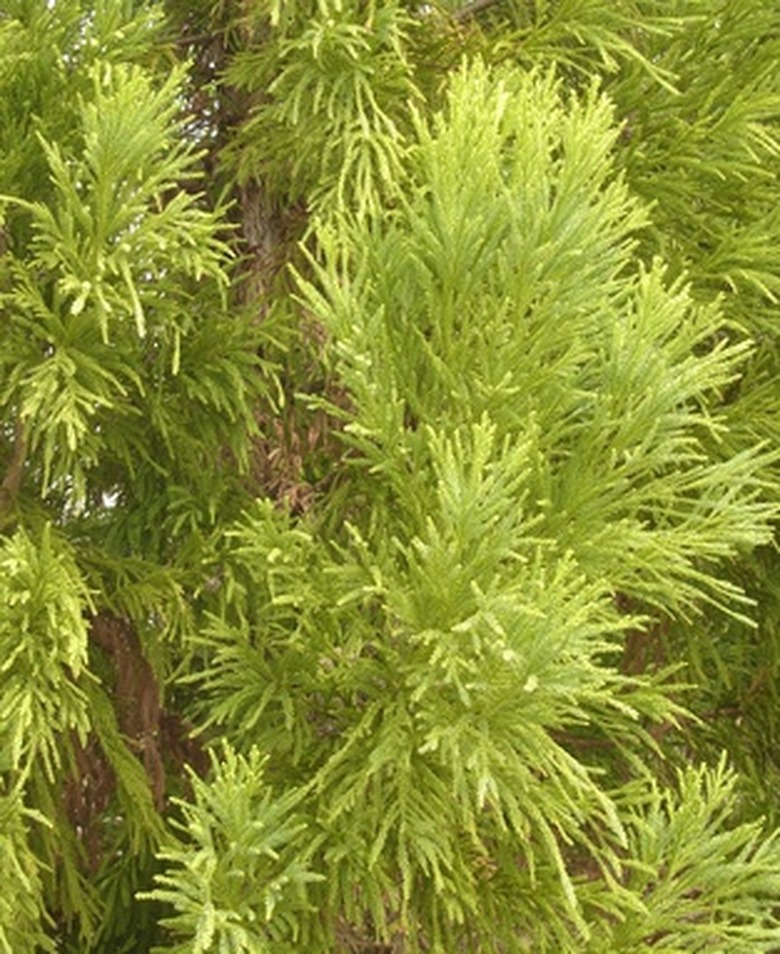How To Grow Grass Under Cedar Trees
Things Needed
- Rubber gloves
- Rake
- Wheelbarrow
- Pruning shears
- Soil testing kit
- Bucket
- Sulfur or lime
- Grass seeds
- Garden hose
Cedar trees enhance the beauty and appeal of the surrounding landscape and provide plenty of shade during hot, sunny days. However, these large ornamental trees often prevent grass or other vegetation from growing underneath, often creating bare patches in the soil. The roots of cedar trees compete for water and nutrients in the soil, and the heavy, dense boughs prevent sunlight from reaching the ground, thus making it all the more difficult for grass to grow underneath. However, with careful grass selection and proper care techniques, you can grow a dense carpet of grass under a cedar tree.
Step 1
Wear rubber gloves and rake the area under the cedar tree to expose the bare patch of soil. Push the rake deep to loosen the top 2 inches of soil without damaging the roots. Collect fallen cones, weeds, leaves, stones, rocks, plant debris and 1 inch of soil in a wheelbarrow and dispose appropriately.
- Cedar trees enhance the beauty and appeal of the surrounding landscape and provide plenty of shade during hot, sunny days.
- However, these large ornamental trees often prevent grass or other vegetation from growing underneath, often creating bare patches in the soil.
Step 2
Cut low-lying branches with pruning shears to allow sunlight and air to reach the soil below. Make sharp, straight cuts instead of jagged ones that injure the tree.
Step 3
Test the pH level of the soil and amend accordingly. The roots of cedar trees extract valuable nutrients from the soil and fallen needles raise the acidity to levels too high for grass to tolerate, creating the need for soil amendments. Ensure the pH level of the soil lies between 6.0 and 6.5.
Step 4
Sprinkle lime to raise or sulfur to lower the pH level of the soil. Rake the area to ensure the soil amendments go deep. Pour fresh topsoil in a bucket and pour a 1-inch thick layer over the existing soil. Rake the area to ensure it mixes with the soil.
- Cut low-lying branches with pruning shears to allow sunlight and air to reach the soil below.
- Sprinkle lime to raise or sulfur to lower the pH level of the soil.
Step 5
Spread a variety of shade-tolerant grass seeds over the area by hand or with a seed spreader. Fescue grasses, such as hard or red fescue, thrive well in shady conditions and are moderately drought-tolerant.
Step 6
Rake the area to ensure the seeds go 1/4 inch deep in the soil, and water lightly with a garden hose. Keep the area evenly moist at all times until the seeds germinate.
Tip
Purchase good quality grass seeds from a trusted retailer. If planting over bare soil, use 4 lbs. of grass seeds for a 1,000 square-foot area. Use 2 lbs. of seeds if reseeding thin or scarcely growing grass. Remove fallen cedar foliage, branches or cones from the ground immediately to prevent smothering the grass.
